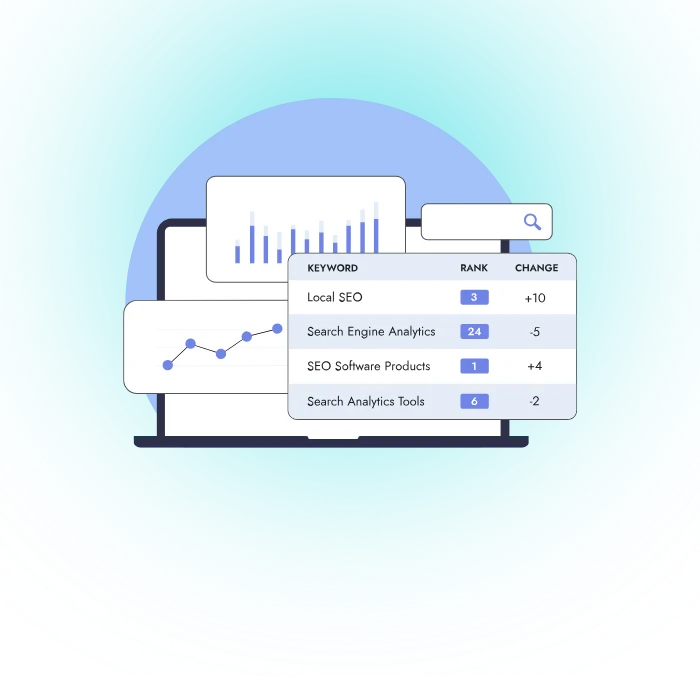Search engine optimization (SEO) is crucial for driving relevant organic traffic to websites. Implementing schema markup is an effective SEO strategy that can enhance website visibility and ranking in search engine results pages (SERPs). Schema markup uses structured data and semantic markup to categorize and add context to website content. This additional structure and context allows search engines to better understand webpage content and display it more prominently in SERPs through rich snippets, enhanced search features, and higher rankings.
What is Schema Markup?
Schema markup refers to code that is implemented on webpages using metadata optimization and HTML tags to classify the content structure and categorize the type of information presented. Schema markup uses microdata, JSON-LD, or RDFa to apply semantic annotations that enable search engines to identify entities on a page, determine relationships, and pull key data points into SERPs.
By adding descriptive identifiers and clearly defining data types and properties, schema markup facilitates information retrieval and optimal data presentation in SERPs. It acts as a content enhancement, providing supplementary details through semantic cues rather than altering the actual content.
Some common applications include:
Product schema for e-commerce sites
Job posting schema for hiring sites
Recipe schema for food blogs
Event schema for calendar listings
Article schema for online publications
FAQ schema for support content
Review schema for product ratings and commentary
Overall, implementing schema markup improves webpage classification to help search engines better decode data, interpret contextual relevance, and determine authority and trust.
How Does Schema Markup Impact Search Ranking?
Schema markup is considered one of numerous webpage ranking factors used by search engines like Google to assess content quality, depth, accuracy, and usefulness when determining relevant search results. Specifically, properly structured and semantic data helps search bots to:
Categorize Pages by Topic and Type – Schema enables webpages to be classified by focus, function, content type, or industry, allowing more precise indexing aligned to searcher intent.
Highlight Key Data – Identifying key data makes certain information easier to interpret and promotes its visibility in SERPs through selective display. For example, vital product specs, recipe details, critic ratings, event listings, and more can appear directly in search results.
Validate Facts – Schema helps verify website data, authority, and reliability which builds trust in search engine algorithms. By parsing data correctly, improper or inconsistent markup implementation can also undermine perceived legitimacy.
Enhance Search Features – Rich results like featured snippets, knowledge panels, and carousels rely on schema markup to source relevant content with the right supplemental details needed.
Improve Understanding – Additional context aids comprehension which strengthens the search engine’s interpretative capabilities around queries and content meaning. Supplementary metadata means the engine better grasps what pages are about.
Combined, structured data allows crawlers to make smarter connections to indexed content and rank pages more precisely to unique searches. Pages recognized as high-quality and authoritative sources on a focused topic typically gain increased visibility in keyword search results.
Specifically, adding markup can improve website ranking by:
Increasing CTRs – Compelling SERP appearances catch user attention, improve clickthrough rates, and indicate relevance.
Boosting Indexing – Structured data helps pages get picked up and categorized by crawlers more readily during indexing which expands reach.
Enhancing Authority – Markup use shows technical effort which adds legitimacy, especially for types like reviews and citations.
Refining Ranking Signals – Quality schema indicates expertise which translates into stronger overall optimization signals that improve rankings.
The consensus thinking by SEO experts is that schema markup has transitioned from a “nice-to-have” into an imperative for competitive ranking success and is now weighted more heavily as a positive optimization and content quality signal.
Types of Schema Markup to Improve SEO
There are many schema markup options to choose from depending on webpage goals and content types. Here are some of the most essential marking up schema types for SEO enhancement:
Article Schema – Outlines articles and blog content for news sites and publications. Requires headline, images, date published, author, publisher logo markup.
Breadcrumb Schema – Denotes website page hierarchy and navigation pathing. Needs individual page URLs defined within site architecture chain.
FAQ Schema – Highlights frequently asked questions and answer pairs for consumer inquiry and troubleshooting content.
Job Posting Schema – Delineates key details on active employment opportunities like description, skills, salary, etc.
Local Business Schema – Identifies relevant location, contact, and operational details for physical company sites and outlets. Enhances map search visibility.
Product Schema – Showcases product name, description, brand, SKU, ratings, images, availability and pricing. Crucial for e-commerce.
Recipe Schema – Notes ingredient lists, cooking directions, cook times, calories, images, and other nutritional data for food blogs.
Review Schema – Includes rated scores and quoted excerpts from critic assessments on performances, products, businesses, etc.
Video Schema – Incorporates titles, descriptions, duration run times, thumbnails, and upload dates for video hosting platforms and publishers.
Implementation Best Practices
Follow these guidelines to gain the most SEO value from schema markup:
Relevance – Only include schema directly related to the core focus and content types appearing on specific pages. Don’t force irrelevant markup.
Accuracy – Precisely match schema identifiers, labels, and data classification to accurately reflect page content. Errors undermine trust signals.
Consistency – Use the same markup scheme across similar types of content to reinforce crawlability. Varied structure confuses.
Clarity – Be concise yet thorough in scope when applying markup structure. Include all vital identifiers without excess.
Validity – Double-check code with Google’s Structured Data Testing Tool to catch errors that would invalidate proper interpretation.
Measure Website Ranking Improvements
Tracking key metrics helps gauge page performance gains directly attributable to the addition of schema markup:
Higher Click-Through-Rates – Compare SERP CTRs on pages with and without markup and note differences.
Increased Organic Traffic – Use analytics to measure the climb in keyword search sessions monthly to determine growth trend impact.
More Rich Snippet Appearances – Check search results to count expanded visuals aided by schema markup for assessments.
Improved Keyword Rank Tracking – Document upward ranking movements in key search terms with schema added over time.
It can take several months to start registering the crawl, index, trust, and ranking improvements from adding markup. Leverage tools like Search Console, Analytics, and Rank Trackers to quantify real changes.
Expert Opinions on Schema for SEO
Industry thought leaders widely view schema markup as an indispensable technical component driving higher visibility and better performance. Lisa Raehsler, former head of search data at Google explicitly stated schema should be considered “a core part” of every serious SEO strategy at this point. Moreover, experimentation indicates pages enriched by schema can gain a ~30% increase in impressions relative to similar unmarked pages.
Additional influential perspectives echo the rising necessity to prioritize schema markup for competitive SEO…
“Schema has grown from a minor SEO opportunity into a vital ranking signal based on our optimization tests.” – Rand Fishkin, Sparktoro Founder
“Proper use of schema markup plays an integral role in improving organic visibility and performance.” – Bartosz Góralewicz, Onely Founder
“Crawling miscues from poor web architecture are reduced by schema structure allowing better indexing.” – Aleyda Solis, Orainti Founder
“Schema helps search bots interpret pages closer to how a human viewer would understand content.” – Eric Enge, Perficient Digital CEO
“Markup helps featured snippets answer more nuanced queries which increases click propensity.”- Duane Forrester, Bing Webmaster Trends Analyst
Additional Schema Markup Options
While the previously mentioned schema markups are among the most popular for SEO enhancement, there are additional options to consider as well:
Event Schema – Details event names, dates/times, locations, descriptions, images, organizers and more. Crucial for calendars, tickets, and registration listings.
Course Schema – Outlines educational class names, descriptions, organization, provider, location, prices, etc. The key for schools, boot camps, online learning platforms.
Software App Schema – Highlights application names, operating systems, ratings, price, and categorization. Useful for app marketplaces and software download services.
Apartment Schema – Includes address, price ranges, amenities, number of rooms/baths, and sq. footage for rental property listings.
Service Schema – Specifies descriptions, service types offered, locations, providers, and reviews. Helps classify professional services.
Website Schema – Provides details like site name, description, keywords, URL, and content creation dates. Assists search bots in categorizing.
Dataset Schema – Identifies underlying data sources, tables, metrics, update frequency, license terms, and publishers.
While some niche sites find success optimizing more unusual schema markups like medical procedures, recipes, live streams, comic books, and more – most websites achieve the best ROI prioritizing common schemas aligned closest to their primary content focus and monetization models.
Regardless of which markup types you choose to implement, ensure relevancy, monitor incremental changes in site performance, and allow sufficient time for site recrawling to evaluate the true SEO value derived before expanding efforts.
Visual Examples of Schema Markup in SERPs
To better understand how adding schema can transform website presentation in search engines and deliver compelling SERP features, here are visual examples reflecting enhanced performance:
Product Schema Showcasing Images, Ratings & Reviews
The addition of product schema markup enabled the showcasing of rich imagery, star ratings, and Pull Quote review excerpts to entice searchers.
Job Posting Schema Highlighting Remote Options, Salaries & Skills
This example displays remote work eligibility, salary range, and top prerequisite skills needed thanks to the job posting schema structure improving indexing.
Recipe Schema with Photos, Cooking Time, Ingredients List
Recipe schema ensures the ingredient quantities, numbered steps, cook times, nutritional data, and mouthwatering images all appear directly in search results.
Event Schema Spotlighting Description, Location & Date/Time
Event schema markup powers the prominent display of the event description box along with the venue location and event date timing in the SERP capsuled layout.
Article Schema Enabling Author Avatar, Date & Description
Here’s an example of article schema enabling the author profile image, byline name, article date, and descriptive excerpt to enhance the search result.
The visibility in these examples clearly demonstrates the considerable SEO benefits possible from schema markup thanks to the enriched supplementary content indexed.
In closing, hopefully, this breakdown gives a comprehensive overview of how schema markup can significantly improve website content classification and visibility to search engines – ultimately elevating rankings and conversion potential. Let me know if you need any clarification or have additional schema markup questions!
Conclusion
In closing, schema markup structure and semantic HTML tagging allow website content to be machine-readable for more robust processing by search engine crawlers. By enhancing information classification and context, search bots can better catalog, assess, and rank pages relative to specific user queries. This also facilitates the presentation of website data in richer featured snippets across SERPs – ultimately driving more qualified traffic.
Structuring data typically signals expertise as part of an optimization strategy which further bolsters ranking metrics like clickthrough rates. That’s why analytics often confirm website visibility gains after adding schema. Given the trend of increasingly personalized search experiences driven by page meaning, structured data continues growing as a core prioritization for SEO success. Markup is moving from a selective component into an essential weapon in the search visibility arsenal.
FAQs
Why is schema markup important in SEO?
Schema markup is important in SEO because it helps search engines understand your website content better and display rich results like ratings, FAQs, or course details. Using schema improves visibility, increases click-through rates, and enhances your site’s overall SEO performance.
Is schema markup necessary?
Yes, schema markup is neceessary because it improves how search engines interpret and display your content, leading to rich snippets, higher visibility, and improved click-through rates.
What is schema markup in local SEO?
Schema markup in local SEO is structured data that helps search engines display key business details, like name, address, phone number, reviews, and hours in local search results.
Using local schema improves visibility in Google Maps and boosts local rankings, attracting more nearby customers.
How to validate your schema markup?
You can validate your schema markup using tools like Googles Rich Results Test or Schema Markup Validator.
How schema affects rich results and CTR metrics?
Schema markup affects rich results and CTR by enabling search engines to display enhanced listings, such as ratings, FAQs and event details.
Rich results make your website more noticeable in search, increase trust, and drive higher click-through rates, improving overall SEO performance.
What are Common Issues in Implementing Schema for SEO?
Common issues in implementing schema for SEO include incorrect or incomplete markup, using unsupported schema types, coding errors, duplicate or conflicting data and failure to update schema with content changes.
Does Schema Markup Improve Your Search Rankings?
Schema markup does not directly boost search rankings, but it enhances how your pages appear in search results through rich snippets, which increases click-through rates, user engagement nd indirectly supports better SEO performance.
What website types benefit most from schema markup?
Website types that benefit most from schema markup include eCommerce stores, blogs, local business sites, event pages, recipe sites and online courses.
Does markup work for SEO on mobile pages?
Yes, schema markup works for SEO on mobile pages. Properly implemented markup helps search engines understand content on mobile sites, enabling rich results and improved visibility.






